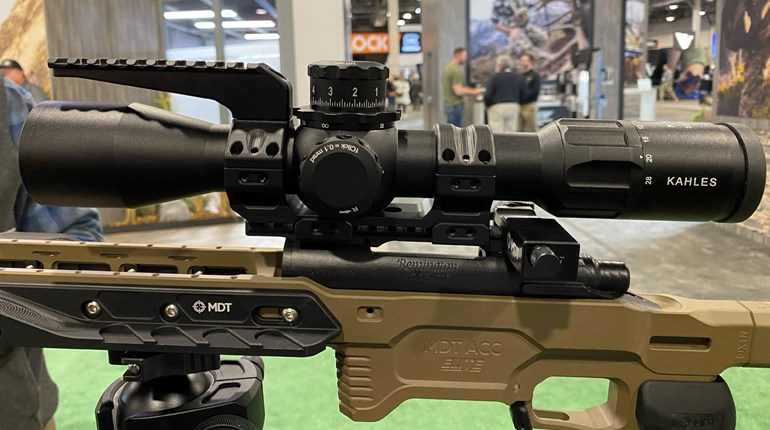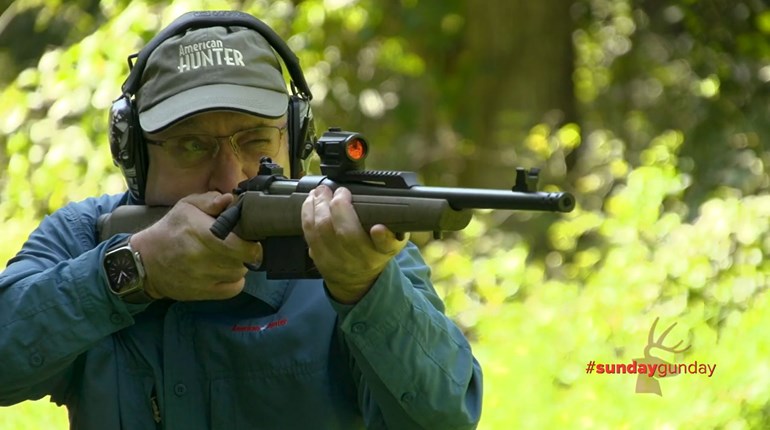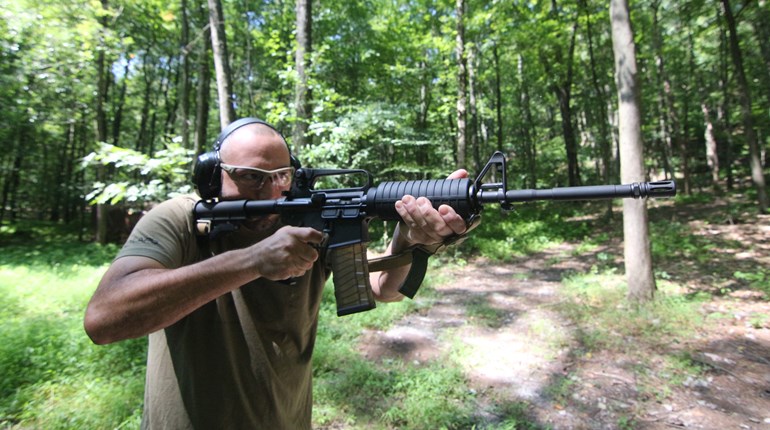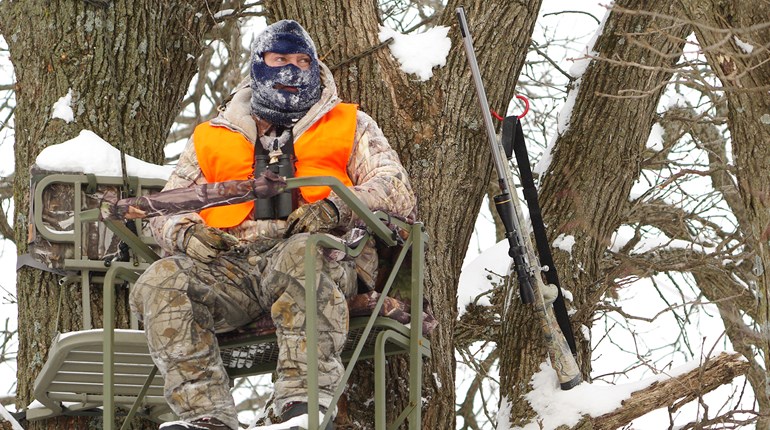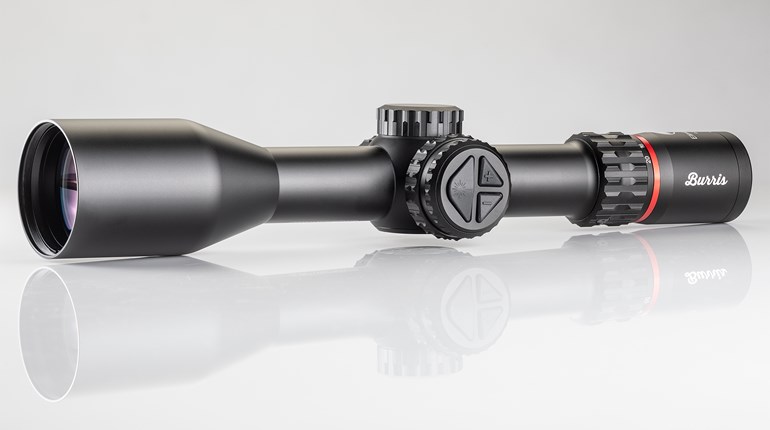
It was my freshman year of college, and as it still does, my mind had wandered from the classroom to the hunting fields. This time, it was helped along by Craig Boddington’s article on hunting a huge Alaskan bull moose, with a brand new cartridge: the .416 Remington Magnum. With the magazine comfortably cradled in the physics textbook, I could almost hear the bull uttering that classic ‘whuuuuuugh’ on the approach. Little did I know that, later in life, both Craig and the .416 Remington would become my dear friends.
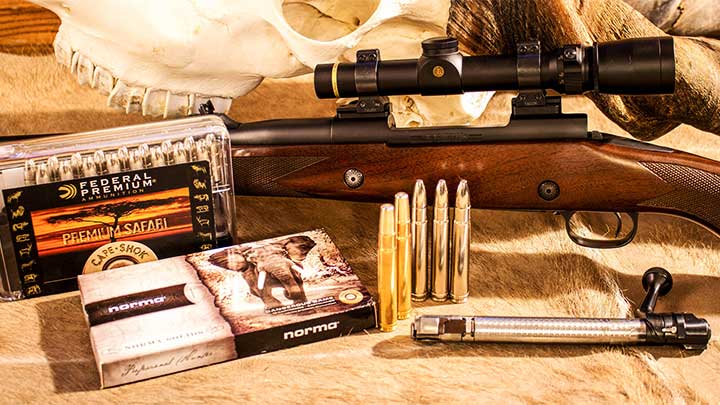
Fast forward almost two decades and I’d be on the tracks of Cape buffalo, in the wilds of Tanzania, with a Winchester Model 70 chambered in .416 Remington Magnum in hand. Though I didn’t connect with a buffalo on that safari, that .416 would settle score in Zambia four years later, when it delivered a 400-grain Swift A-Frame into the boiler room of a mature bull, in addition to the plains game species taken on those two hunts.
The .416 Remington came on the scene in 1989, during a time when the big bores were experiencing a resurgence, especially the .416-inch bore diameter. By 1990, the classic .416 Rigby—which remains a staple among big-game hunters—had two commercial siblings: the .416 Weatherby Magnum and the .416 Remington Magnum. The former is based on the huge, proprietary .378 Weatherby case, but the latter was a derivative of the belted Holland & Holland family.
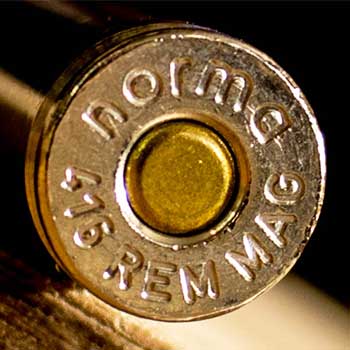
To understand the development of the .416 Remington, you’ll need to look at the environment in Great Britain after the end of the Second World War. While the hunting was opening up again across East Africa, the British ammunition for the big safari guns was drying up, rendering those guns nearly useless. Thankfully, there were good supplies of American ammunition for the .375 Holland & Holland, as well as for that newcomer, the .458 Winchester Magnum. It would be those two cartridges which would share the majority of the African hunting duties for the next few decades, but the wildcatters who loved the .416-inch-bore would use both of those cases to keep the bore diameter alive.
Bob Chatfield-Taylor necked down the .458 Winchester Magnum, with its 2½-inch case, to create his .416 Taylor, which would match the classic Rigby formula of a 400-grain bullet at a muzzle velocity of 2400 fps, for 5,000 ft.-lbs. of muzzle energy. The Taylor works very well in a standard long-action rifle. But it was George Hoffman—an American professional hunter in Africa—who opened the 2.85-inch .375 H&H Magnum case up to hold .416-inch-diameter bullets, resulting in the .416 Hoffman, which would also match the Rigby ballistics.
Remington officially sites their 8mm Remington Magnum case as the basis for their .416 Remington Magnum, but the resemblance to the .416 Hoffman is undeniable. Though the Hoffman is only slightly larger in diameter, .416 Remington Magnum ammunition can safely be fired from the Hoffman chamber, but not vice-versa. No matter which way you view the parent case (the .375 H&H was the basis for both the 8mm Remington Magnum and the .416 Hoffman), the .416 Remington Magnum is a sound design. The small, 25-degree shoulder produces a neck long enough for proper bullet tension, and the H&H belt is used for headspacing.
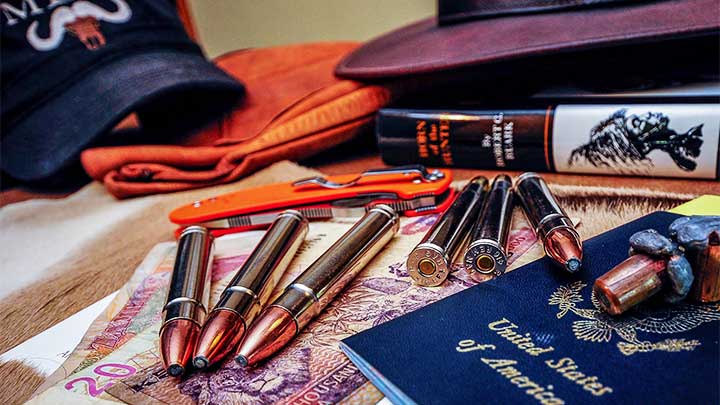
The cartridge measures 3.600 inches, and will require a magnum-length action, though because of the smaller case body diameter, you can fit more Remington cases in a magazine than Rigby cases. And, as the comparisons will invariably be made between the Rigby and the Remington designs, the factory ammunition will show equal ballistics (usually the 400-grain bullets at 2400 fps) though the Rigby can be handloaded to higher velocities. The Remington does run at a higher pressure, but in a well-designed, controlled-round-feed rifle, that higher pressure poses no issue.
The .416 Remington Magnum is fully capable of handling any and all game, including the heavyweights like elephant, hippo, buffalo and coastal brown bears. Like the Rigby, the Remington uses that 400-grain bullet—with a sectional density of 0.330—to give the excellent penetration that the .416s are famous for; many African PHs will tell you the .416s offer just about the best penetration available, which will come in very handy with the thick-skinned game like hippo and elephant. With the softpoint bullets, the .416 Remington will handle any species suitably hunted with an expanding bullet, and I've used it for game species from warthog and bushbuck, to hartebeest and Cape buffalo; it has been the only rifle I’ve brought on a couple safaris.
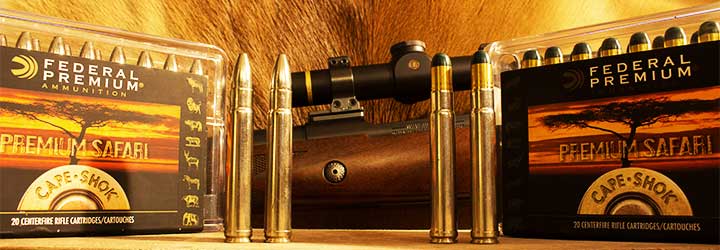
It has become the cartridge of choice of more than a few Alaskan bear guides, as it is capable of stopping a bear of any color or species, immediately. It is also stout enough to be a stopping rifle in the hands of African PHs, and I’ve known several—including my friends Brian van Blerk and Terry Calavrias—who have carried the cartridge without concern. Ammunition is plentiful, with factory stuff available from Barnes (the 400-grain TSX is a beast), Nosler offers the 400-grain Partition, Hornady loads the duo of DGX Bonded and DGS, and Federal has the Cape Shok Trophy Bonded Bear Claw, Trophy Bonded Sledgehammer and Woodleigh Hydro Solid. Swift loads the fantastic A-Frame, and Norma loads the 450-grain Woodleigh Weldcore and FMJ in their African PH line, at a muzzle velocity of 2150 fps.
The trajectory of the .416 Remington Magnum is actually flatter than most would think; looking at Federal’s Trophy Bonded Bear Claw 400-grain load, using a 200-yard zero, the bullet will be 12 inches low at 300 yards, and 35 inches low at 400 yards. It can be housed in a well-balanced rifle, and there are a number of affordable choices on the market. Recoil isn’t much heavier than the .375 H&H, yet the terminal results are visibly greater; buffalo seem to shudder when they are shot with the .416 Remington. While the .458s may be a better stopping cartridge, the .416 Remington’s flatter trajectory makes it a very useable cartridge.
I took my first buffalo bull with the .416 Remington and the cartridge and that Winchester 70 have a very special place among my hunting memories. If you had to choose an all-around dangerous game cartridge, you could certainly do a lot worse than choosing the .416 Remington Magnum.
Looking for previous installments of our "Behind the Bullet" series? We've got you covered.
• .300 Winchester Short Magnum
• 28 Nosler
• 6.5 PRC
• .22 WMR
• .458 Winchester Magnum
• .22 Hornet
• .280 Ackley Improved
• .240 Weatherby Magnum
• .458 Lott
• .264 Winchester Magnum
• .348 Winchester
• .33 Nosler
• .260 Remington
• .30-30 Winchester
• .416 Rigby
• .358 Norma Magnum
• .22 LR
• 7mm-08 Remington
• 8mm Remington Magnum
• .338 Federal
• .224 Valkyrie
• .338-06 A-Square
• 9.3x62mm Mauser
• .257 Weatherby Magnum
• .45-70 Government
• .300 H&H Magnum
• .25-06 Remington
• .30-06 Springfield
• 6.5 Creedmoor
• .300 Remington Ultra Magnum
• 7mm Remington Magnum
• .470 Nitro Express
• .280 Remington
• .300 Winchester Magnum
• .270 Winchester
• .222 Remington
• .45 ACP
• .404 Jeffery
• .44 Remington Magnum
• .41 Remington Magnum
• .243 Winchester
• .338 Winchester Magnum
• .357 S&W Magnum
• 6.5-284 Norma
• 8x57 Mauser
• .38 Smith & Wesson Special
• 7x57mm Mauser
• 9 mm Luger
• .35 Whelen
• .454 Casull
• .375 H&H Magnum
• .45 Colt
• .22-250 Remington
• 10mm Auto
• .308 Winchester



























